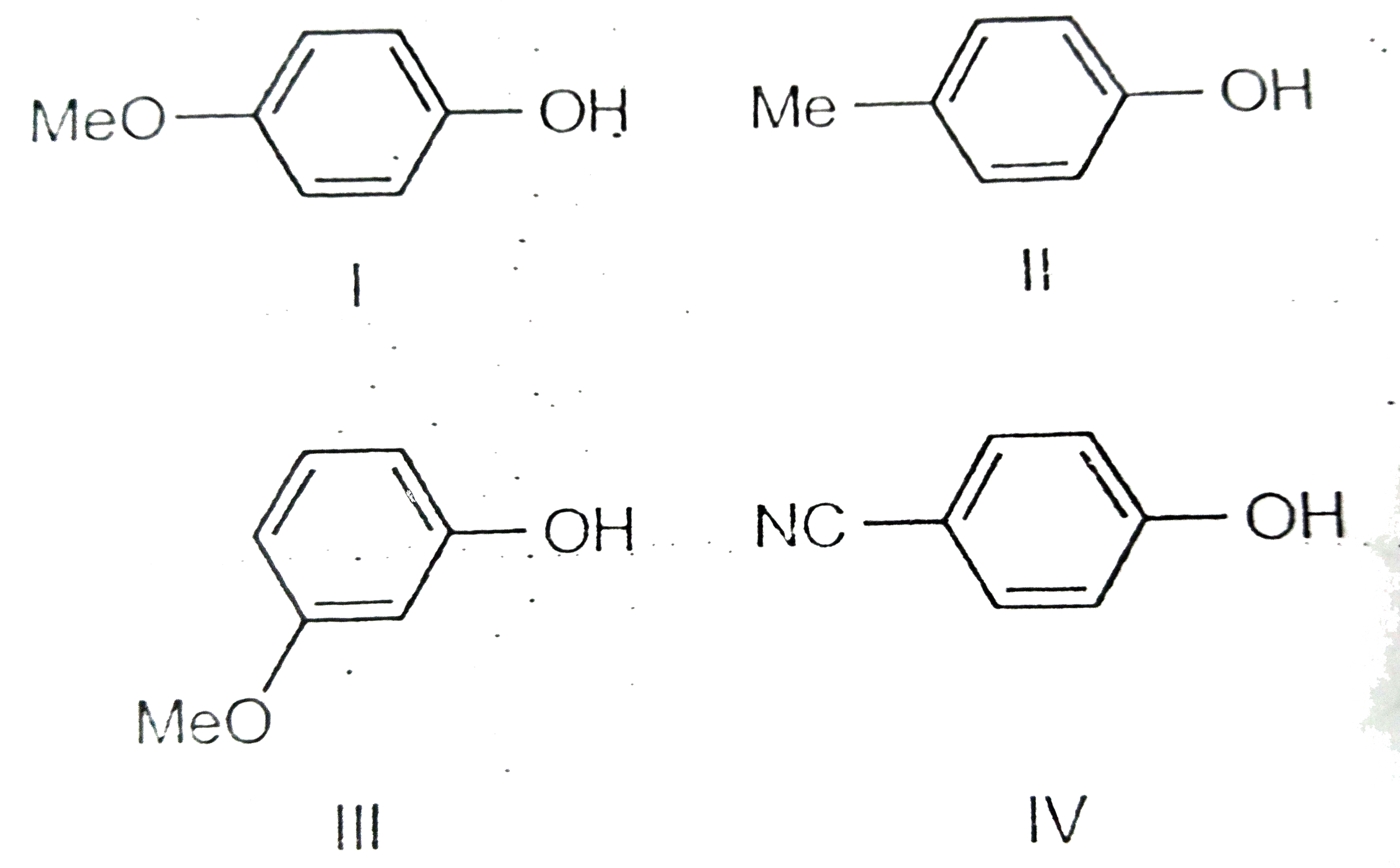Acidic nature is more for
o-amino phenol
m-amino phenol
p-amino phenol
All have equal Ka's
To determine the acidic nature of orthoaminophenol, metaminophenol, and paraminophenol, we will analyze the effects of the amino group (NH2) on the phenolic hydroxyl group (OH) in each compound.
1. Draw the Structures:
- Orthoaminophenol: The amino group is attached to the benzene ring adjacent to the hydroxyl group.
- Metaminophenol: The amino group is attached to the benzene ring one carbon away from the hydroxyl group.
- Paraminophenol: The amino group is attached to the benzene ring directly opposite the hydroxyl group.
2. Identify the Effects of the Amino Group:
- The amino group (NH2) is an electron-donating group due to its +I (inductive) and +M (mesomeric) effects. This means it can donate electron density to the ring and the hydroxyl group.
- However, the position of the amino group relative to the hydroxyl group affects the overall acidity.
3. Analyze Each Compound:
- Orthoaminophenol: The +M effect of the amino group can stabilize the negative charge on the phenoxide ion (the deprotonated form of phenol), but the proximity of the NH2 group can also lead to steric hindrance and intramolecular hydrogen bonding, which can affect acidity.
- Metaminophenol: The amino group is in the meta position, which means it cannot exert a +M effect on the hydroxyl group. It only exerts a -I effect, which withdraws electron density and increases acidity.
- Paraminophenol: The amino group is in the para position, allowing it to exert both +M and +I effects. This electron donation decreases the acidity compared to metaminophenol.
4. Compare the Acidity:
- The acidity of these compounds can be ranked based on the effects of the amino group:
- Metaminophenol: Exhibits a -I effect, increasing acidity.
- Orthoaminophenol: Has a mixed effect due to steric hindrance and intramolecular interactions, leading to moderate acidity.
- Paraminophenol: The +M effect of the amino group decreases acidity the most.
5. Conclusion:
- The order of acidic nature from most acidic to least acidic is:
- Metaminophenol > Orthoaminophenol > Paraminophenol.
- Therefore, the most acidic compound is Metaminophenol.
Final Answer:
The acidic nature is more for Metaminophenol.
- Orthoaminophenol: The amino group is attached to the benzene ring adjacent to the hydroxyl group.
- Metaminophenol: The amino group is attached to the benzene ring one carbon away from the hydroxyl group.
- Paraminophenol: The amino group is attached to the benzene ring directly opposite the hydroxyl group.
- The amino group (NH2) is an electron-donating group due to its +I (inductive) and +M (mesomeric) effects. This means it can donate electron density to the ring and the hydroxyl group.
- However, the position of the amino group relative to the hydroxyl group affects the overall acidity.
- Orthoaminophenol: The +M effect of the amino group can stabilize the negative charge on the phenoxide ion (the deprotonated form of phenol), but the proximity of the NH2 group can also lead to steric hindrance and intramolecular hydrogen bonding, which can affect acidity.
- Metaminophenol: The amino group is in the meta position, which means it cannot exert a +M effect on the hydroxyl group. It only exerts a -I effect, which withdraws electron density and increases acidity.
- Paraminophenol: The amino group is in the para position, allowing it to exert both +M and +I effects. This electron donation decreases the acidity compared to metaminophenol.
- The acidity of these compounds can be ranked based on the effects of the amino group:
- Metaminophenol: Exhibits a -I effect, increasing acidity.
- Orthoaminophenol: Has a mixed effect due to steric hindrance and intramolecular interactions, leading to moderate acidity.
- Paraminophenol: The +M effect of the amino group decreases acidity the most.
- The order of acidic nature from most acidic to least acidic is:
- Metaminophenol > Orthoaminophenol > Paraminophenol.
- Therefore, the most acidic compound is Metaminophenol.
The acidic nature is more for Metaminophenol.
Similar Questions
Phenols are more acidic than aliphatic alcohols acidity of phenols can be further increased by the introduction of electron withdrawing groups in aromatic ring .Acidic nature of phenol is because of the resonance stabilization of phenoxide ion

Which of the following will evolve CO2 gas with aqueous NaHCO3?View Solution(a) Why acidic nature of alcohol and phenol increase with electron withdrawing substituent
(b) Explain the order of acidic nature of View Solution
View Solution
Knowledge Check
- Question 1 - Select One
The correct trend of acidic nature of the following alkynes is
ACH≡CH>CH3−C≡CH>CH3C≡CCH3BCH3−C≡CH>CH≡CH>CH3C≡CCH3CCH3C≡CCH3>CH3−C≡CH>CH≡CHDCH≡CH>CH3C≡CCH3>CH3C≡CH - Question 2 - Select One
Which of the following factor is responsible for acidic nature of Laterite soil?
AAs it is friable in nature.BAs it can retain moisture.CAs the bases leached down from the top soil.DAll the above are correct. - Question 3 - Select One
Which of the following factor is responsible for acidic nature of Laterite soil?
AAs it is friable in nature.BAs it can retain moisture.CAs the bases leached down from the top soil.DAll the above are correct.
Write a chemical equation to illustrate the acidic nature of nitric acid.
View SolutionCorrect order of acidic nature of C-H bond will be
_CHE_E06_234_Q01.png) View Solution
View SolutionPhenols are more acidic than aliphatic alcohols acidity of phenols can be further increased by the introduction of electron withdrawing groups in aromatic ring .Acidic nature of phenol is because of the resonance stabilization of phenoxide ion

Arrange the given phanols in the increasing order of acidic strength
 View Solution
View SolutionPhenols are more acidic than aliphatic alcohols acidity of phenols can be further increased by the introduction of electron withdrawing groups in aromatic ring .Acidic nature of phenol is because of the resonance stabilization of phenoxide ion

Consider the following reactions

major product the above reaction would beView SolutionGive two reactions that show the acidic nature of phenol. Compare the acidity of phenol with that of ethanol.
View Solution
